Compound (A)(C8H12) on oxidation gives an acid B(C4H6O2). One mole of compound (A) reacts with 3mol of H2 in the presence of Pt catalyst to give octane. Identify compound (A).
C8H12 (A)  (C4H6O2) (Acid)
(C4H6O2) (Acid) 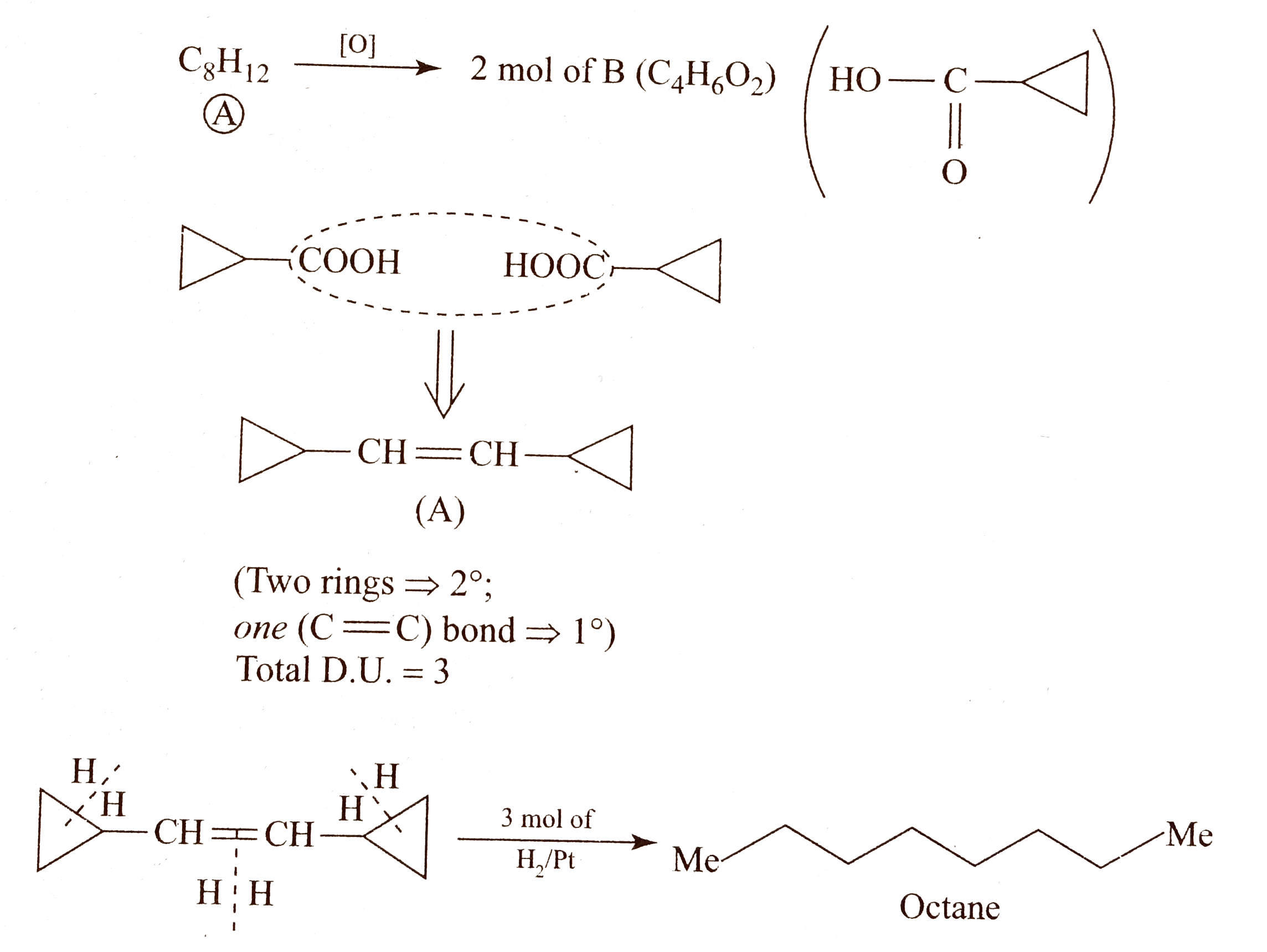
Degree of unsaturation is compound (A)
D.U. in (A)=(2nC+2)−nH2=(2×8+2)−122=3∘
Degree of unsaturation in compound (B)( discard O and calculate D.U.)
D.U. in (B)=(2nC+2)−nH2=(2×4+2)−62=2∘
Acid has 1∘ of unsaturation, so 1∘ of unsaturation shoulb in (C3H5−) group. It can be one (C=C) or a ring. One (C=C) bond is not possible because after the oxidation of compound (A), the double bond cannot be left behind in (B), So, it is a three membered ring.
Moreover, number of C atome in (A) is twice the number of C atoms in acid (B). So, 2mol of acid join with each other to give the compound (A).
Since the cyclopropane ring is a highly strained ring, so on hydrogenation under normal conditions it gives propane. Hence, on hydrogenation, 3mol are required, 1mol each for the cyclopropane ring and 1molfor the reducing the (C=C) bond.
Topper's Solved these Questions
- BOOK - CENGAGE CHEMISTRYCHAPTER - ALKENES AND ALKADIENESEXERCISE - SOLVED Example62videos
ALKENES AND ALKADIENES
- BOOK - CENGAGE CHEMISTRYCHAPTER - ALKENES AND ALKADIENESEXERCISE - EXERCISES29videos
ALKENES AND ALKADIENES
- BOOK - CENGAGE CHEMISTRYCHAPTER - ALKANES AND CYCLOALKANESEXERCISE - Archives13videos
ALKANES AND CYCLOALKANES
- BOOK - CENGAGE CHEMISTRYCHAPTER - ALKYNESEXERCISE - Exercises (Archives - Analytical and Desriptive Type)4videos
ALKYNES
Similar Questions
a) Compound (A) C8H12 on oxidation gives an acid (B) C4H6O2. One molecule of compound (A) reacts with 3 mole of H2 in presence of platinum catalyst to give octane. Identify compound (A).
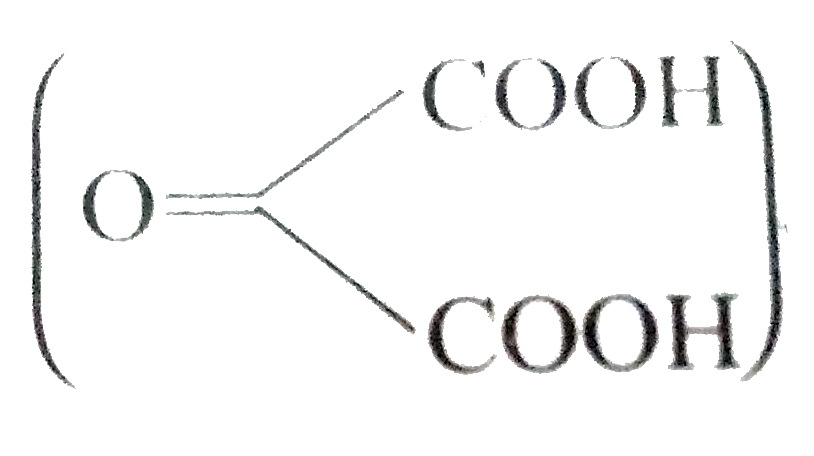 View Solution
View SolutionCompound (A)(C12H16) on oxidation with acideic KMnO4 solution gives acetone and
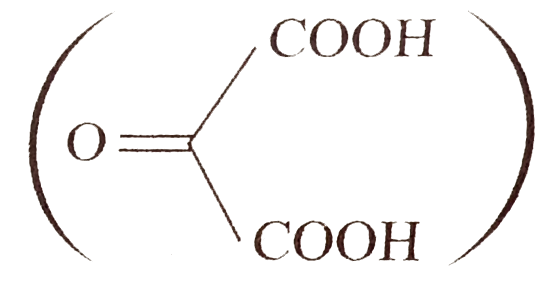 . Identify compound (A). View Solution
. Identify compound (A). View Solution
Knowledge Check
- Question 1 - Select One
The compound X(C3H6O) on oxidation gives a compound Y(C3H6O2) . The compound Y is
Apropanoic acidBbutyric acidCacetic acidDpropenoic acid - Question 2 - Select One
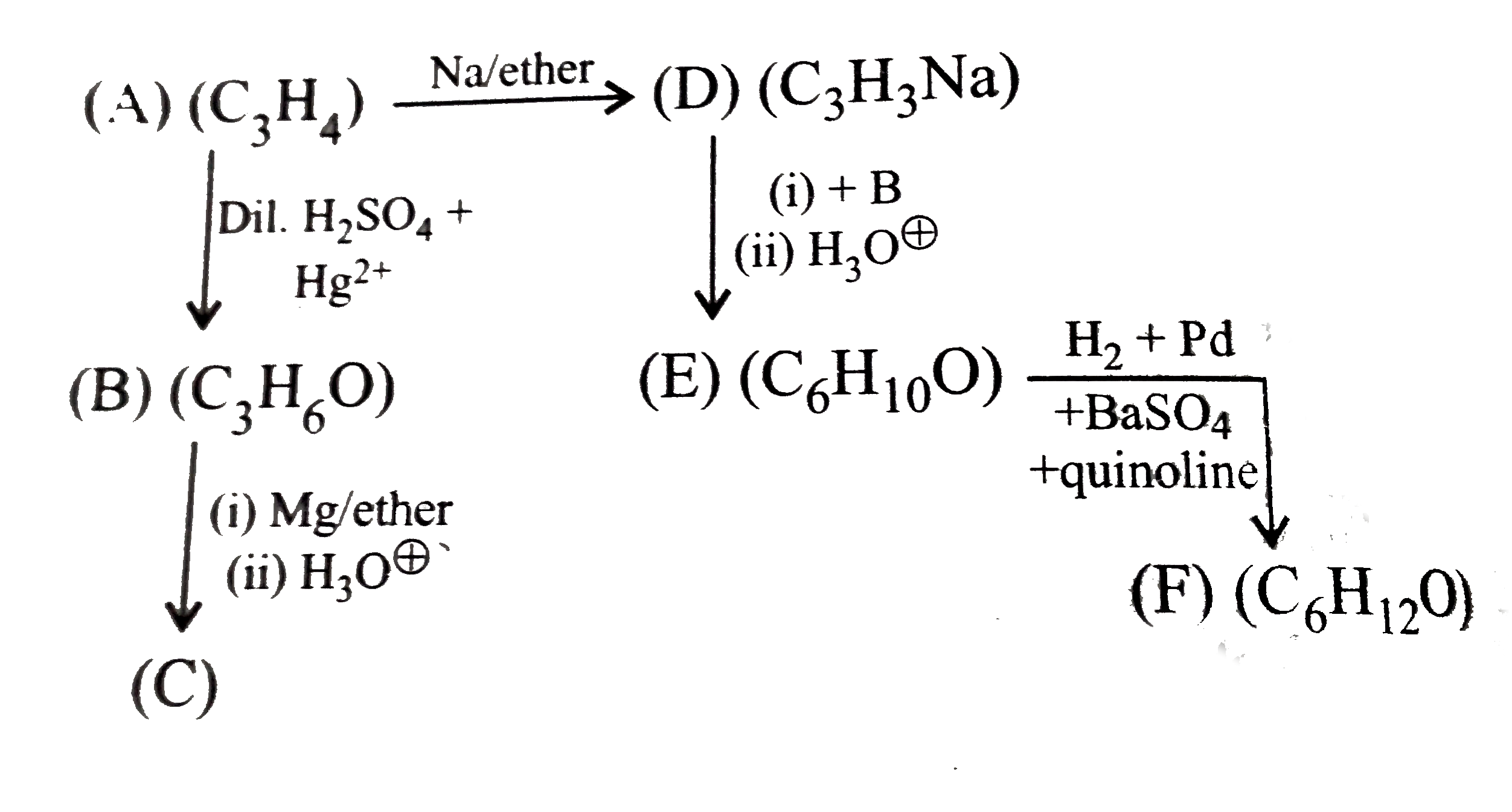
The compound F(C6H12O) on oxidative ozonolysis yirlds acetic acid and a compound (G) (C4H8O3). The new compound (G) on heating gives:A BMe−CH=C=CH−EtC
BMe−CH=C=CH−EtC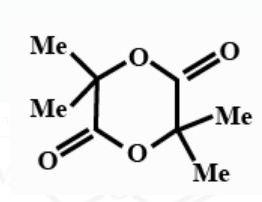 D
D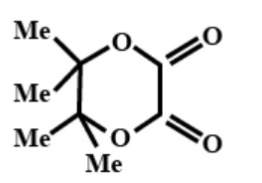
- Question 3 - Select One
A compound (P) having molecular formula C6H10 contains two DU. It yields Q(C6H12) when reacts with excess of H2 of the presence of Ni. On ozonolysis P gives cyclopentanone and compound Y.
IdentifythestructureofthecompoundPA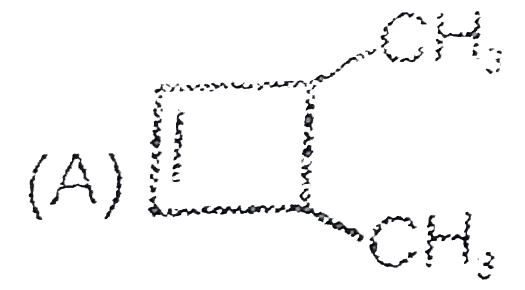 B
B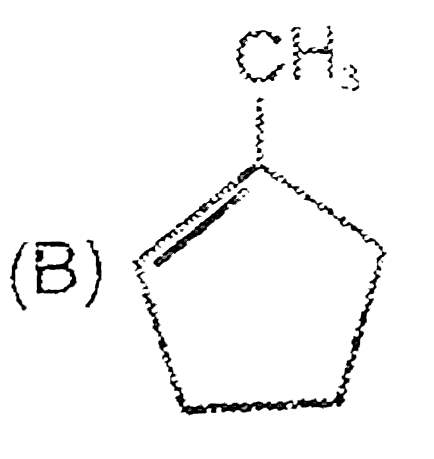 C
C D
D
An organic compound 'A'(C4H10O) is optically active. On mild oxidation, it gives a compound 'B'(C4H8O) but upon vigorous oxidation, it gives another compound 'C'(C3H6O2). The compound 'C' along with 'D' are also formed from 'B' by reacting with iodine in the presence of alkali. Deduce the structures of 'A','B','C' and 'D'.
View SolutionBenzene reacts with CH3I in the presence of AlCl3 to give compound (A)(C7H8) which undergas oxidation with alkaline KMnO4 to give an acidic compound (B).(B) reacts with SOCl2 to give (C) which gives (D) with ammonia. The compound (D) on reaction with bromine and alkali froms (E) which reacts with bromnine water to give (F)(C6H4NBr3).(F) reacts with NaNO2 adn HCl and forms (G)(C6H2N2Br3Cl). Additiaon of Kl froms (H) Indenitify the compounds (A) to (H).
View SolutionAn organic compound A (C7H6Cl2) on treatment with NaOH solution gives another compound B (C7H6O). B on oxidation gives and acid C (C7H6O2) which on treatment with a mixture of conc. HNO3 and H2SO4 gives a compound D (C7H5NO4). B on treatment with conc. NaOH gives a compound E (C7H8O) and C6H5COONa. Deduce the structures of [A], [B], [C], [D] and [E].
View SolutionAn organic compound A(C4H8N2) on hydrolysis in acidic medium gives another compound B(C4H9O2N). B forms zwitter ion and gives off CO2 with NaHCO3. B on heating gives compound C(CH4H7ON).LiAlH4 in ether reduces C to pyrolidine. Identify compounds A,B,C.
View SolutionA compound (P) having molecular formula C6H10 contains two DU. It yields Q(C6H12) when reacts with excess of H2 of the presence of Ni. On ozonolysis P gives cyclopentanone and compound Y.
The compound Q gives the number of of monochlorination productsView Solution

